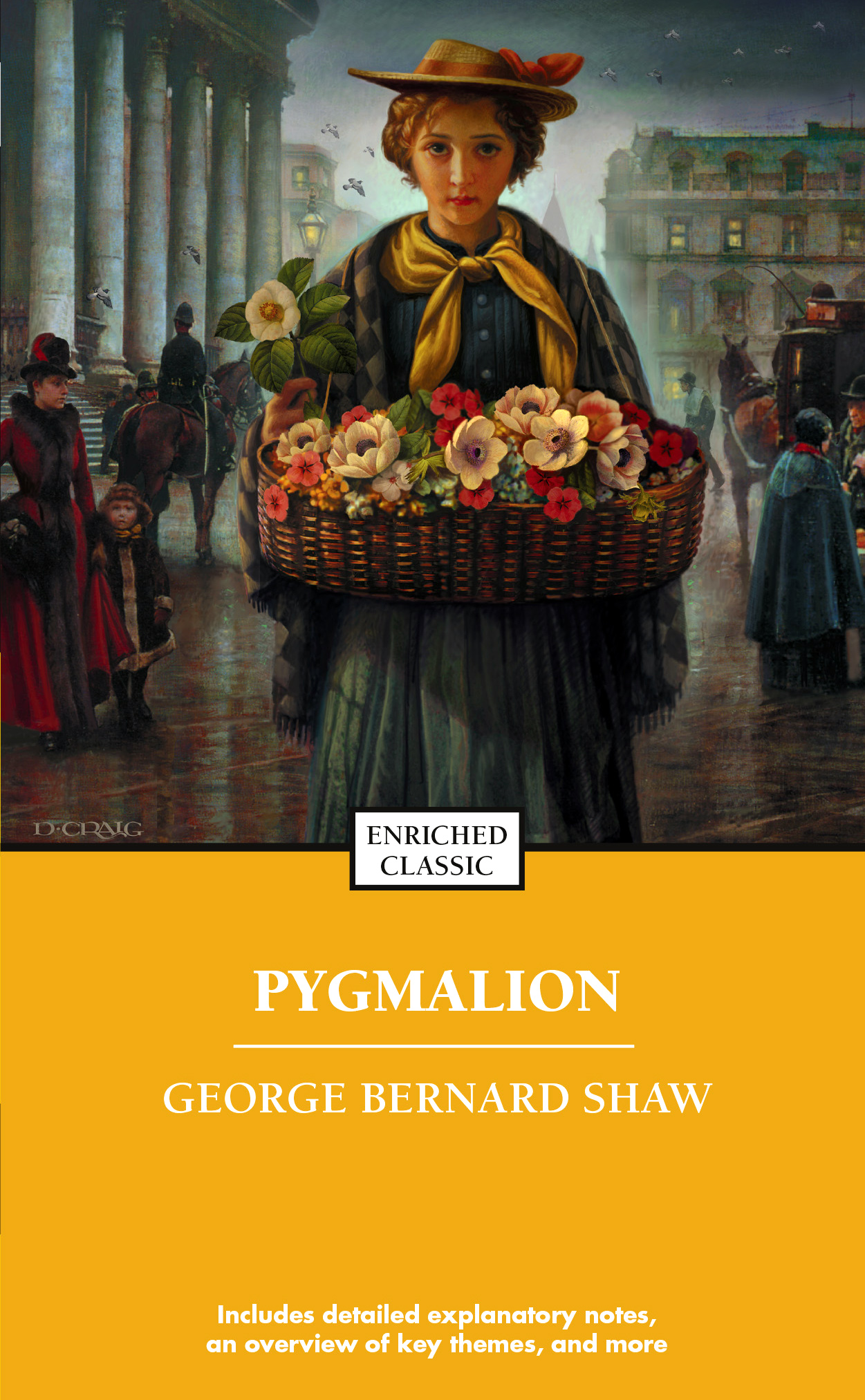
Pygmalion is a play written by George Bernard Shaw. His adaptation of Pygmalion differs quite uniquely from the original Greek myth. The original myth told of a man who did not have much of an interest in women. If he lived in this modern day and age, he would have been able to find his true identity residing in the welcoming and hospitable LGBTQIA+ community. In his clay workshop, this man molded a perfect woman, whom he instantly fell in love with. The concept of falling in love with an inanimate object was not uncommon even beyond Greek myths. In the original myth, the man would talk to his created sculpture every day. He prays to the god of love daily as well, bringing handsome offerings to her. The God, in pity of Pygmalion, fulfilled his wish and granted life to his sculpture, named Galatea. They eventually got married and lived a life of happiness.
Set in a much more recent time from the Greek myth, the play by Shaw tells a very different story. The play takes place in 19th-20th century England, when old English was still the proper form of English used. The book consists of multiple main characters and is written in a style to be read by multiple people. In Act I, one basically needs a pencil in hand to fill in the names for generic labels such as THE MOTHER, THE GENTLEMAN, THE DAUGHTER, etc. By identifying the characters, the reader can track how their names changed throughout the book. For example, The Gentleman, The Mother, The Flower Girl, and The Note-Taker all turn out to be main characters. The Note-Taker, to be known as Higgins later in the book, is introduced in a rather confusing matter. Even in later chapters, Higgins is referred to as the Note-Taker. His linguist and colleague, the Gentleman, Pickering, is also referred to as the Gentlemen late in the book. Being a play written in the 20th century, I would at least expect there to have a clear description and reference to characters in the book, and not switching between nicknames for certain characters.
Written in old English, this play is meant to be performed and not read as a piece of leisure literature. Shaw heavily relies on the aspect of performance in order to convey the emotions and to carry out his intended plot. Without a visual show to pair with the words, the book alone risks being read incoherently and drifting without meaning. Despite sharing the word Pygmalion with the myth, Shaw’s play reveals human fallacies in contrast to the old myth’s singular love pursuit.
If one would like to compare the original myth to this play, one could read the original Greek myth of Pygmalion, especially an extended version. Though written in ancient times, and abridged numerous times, the original myth is a simpler story than Shaw’s interpretation. The library carries The McElderry book of Greek myths by Eric Kimmel which contains an abbreviated version of Pygmalion and Galatea, and this book is suitable for very young readers.
I would caution readers who cannot understand old English very well, or if they are looking for something that has anything to do with love. Even though the myth revolves around love, the play hardly ever shows any of that emotion. I am giving this book a 6/10 rating, to be read with a purpose. This is a book to glimpse into Victorian England. I think it would be a worthwhile read if readers can walk away with an awareness of how far our society has hopefully advanced in developing human warmth and love for all mankind.
Check out Pygmalion from NBPL.